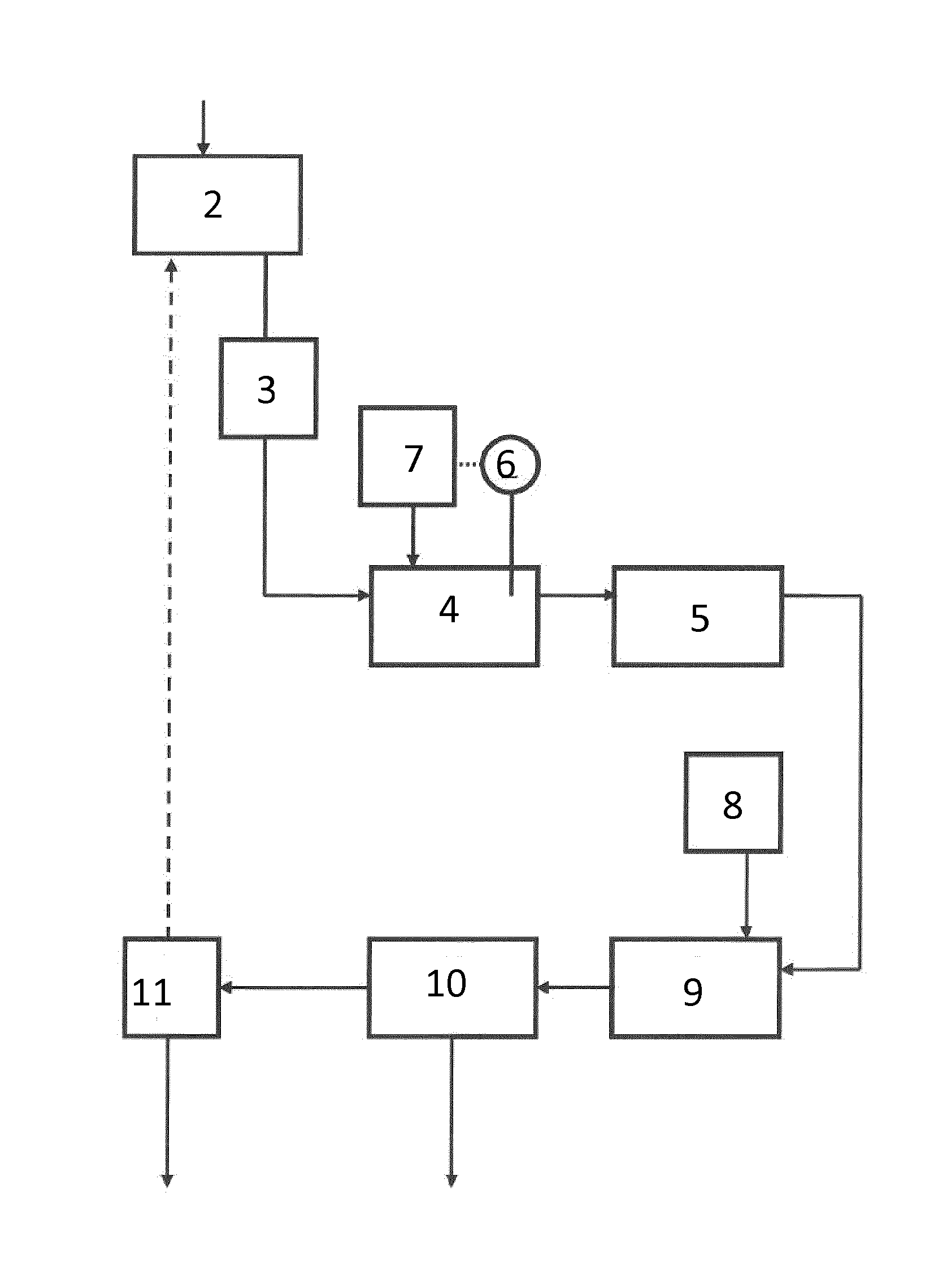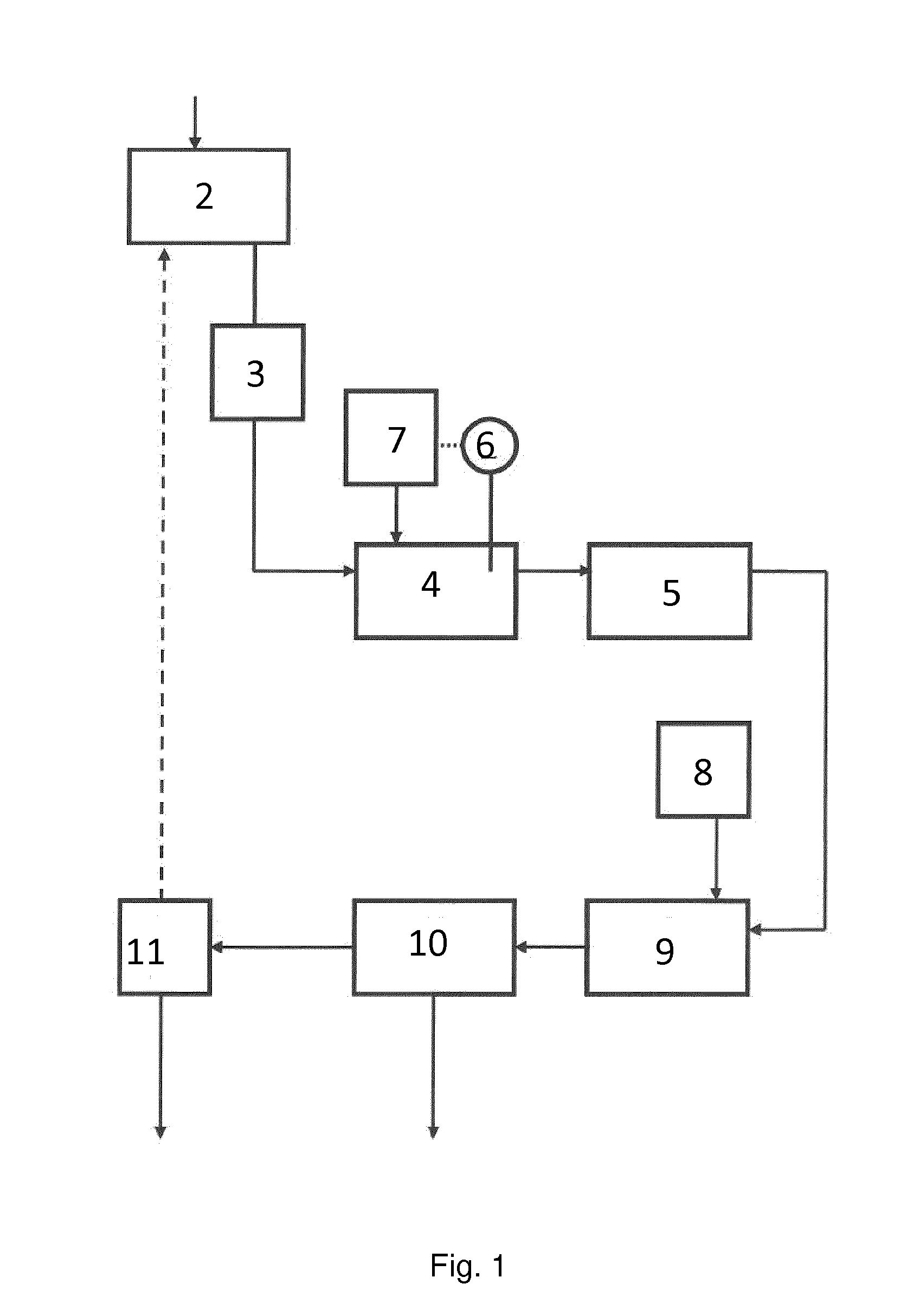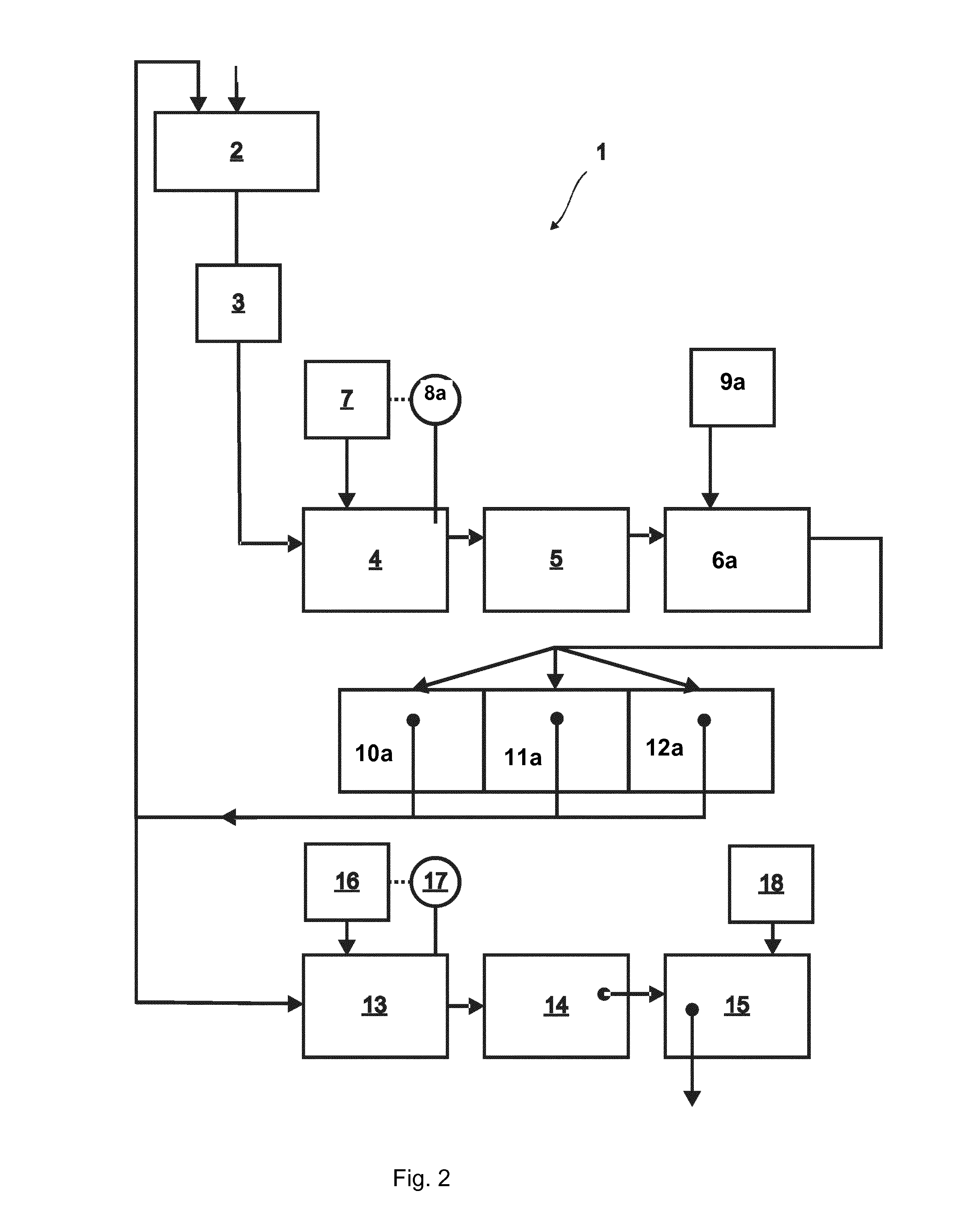Method for removing impurities from flue gas condensate
- Summary
- Abstract
- Description
- Claims
- Application Information
AI Technical Summary
Benefits of technology
Problems solved by technology
Method used
Image
Examples
example 2
Wet Scrubbing of Flue Gas from Waste Incineration
[0183]Flue gas from waste incineration was treated in a system according to the invention. Approx. 40,000 normal m3 flue gases entered the scrubbing zone per hour. The scrubbing liquid was sprayed from nozzles within the scrubber into contact with the gas. To obtain a higher contact surface between liquid and gas, the scrubbing liquid was continuously recirculated in a loop circumventing the regeneration zone. The flow of this loop was approx. 330 m3 per hour.
[0184]The volume of liquid in the scrubbing zone was approx. 7 m3. Initially, this liquid was tap water, but as the process was running, the supernatant liquid of the first regeneration zone was recirculated and mixed with the tap water. This liquid had a circumneutral pH prior to contacting the acids (e.g. sulphur dioxide) of the flue gas.
[0185]A flow of 1,500 litres per hour of the scrubbing liquid was led into the first regeneration zone, first entering a heat exchanger for co...
example 3
Purification of Scrubbing Liquid to Allow Discharge into the Sewer
[0188]Flue gas was treated as described in example 1, but part of the supernatant liquid was directed into a container for further purification to allow discharge into the sewer. The purpose of this treatment is to further reduce the content of dissolved sulphate to a level below the threshold limits for discharge into the sewer.
[0189]A flow of approx. 200 litres per hour of the supernatant emanating from the sedimentation tanks was directed into a second regeneration zone. The liquid was directed into a reactor, wherein Ca(OH)2 was added to the solution. A pH sensor measured the pH value of the mixture and triggered the influx of Ca(OH)2 up to a cut-off value of pH 11. The mixture was transferred to another container where it was aerated with CO2-enriched air using an air pump to lower the pH to pH 7. The resulting suspension containing precipitated calcium sulphate and calcium carbonate was then led into a sedimenta...
example 4
Illustrative Comparison of the Method of Present Invention and Conventional Method Using NaOH / HCl and Flocculation with Reference to FIG. 3
[0190]Flue gas is introduced into a first chamber G1 which initially contains water. In the comparison test, one part of the contents of G1 is treated according to examples 2 or 3 above. In the conventional process, flue gas is introduced into chamber G1 containing an aqueous solution (typically 400 L) which is continuously recycled back into G1 by spray nozzles to maximise the surface of contact by flue gas and water. Then, the gas is further passed on to G2, wherein the same process is repeated and the purified gas is then emitted into the atmosphere. Then, the aqueous phase resulting from this process (ca. 200 L) undergoes a water purification step consisting of regulation of the pH by addition of NaOH (ca. 6M) and / or HCl (ca. 6M) to afford a neutral pH, such that the pH of the solution is about 6-7. Then, the aqueous phase is transferred to a...
PUM
| Property | Measurement | Unit |
|---|---|---|
| Temperature | aaaaa | aaaaa |
| Temperature | aaaaa | aaaaa |
| Temperature | aaaaa | aaaaa |
Abstract
Description
Claims
Application Information
 Login to View More
Login to View More - R&D
- Intellectual Property
- Life Sciences
- Materials
- Tech Scout
- Unparalleled Data Quality
- Higher Quality Content
- 60% Fewer Hallucinations
Browse by: Latest US Patents, China's latest patents, Technical Efficacy Thesaurus, Application Domain, Technology Topic, Popular Technical Reports.
© 2025 PatSnap. All rights reserved.Legal|Privacy policy|Modern Slavery Act Transparency Statement|Sitemap|About US| Contact US: help@patsnap.com



